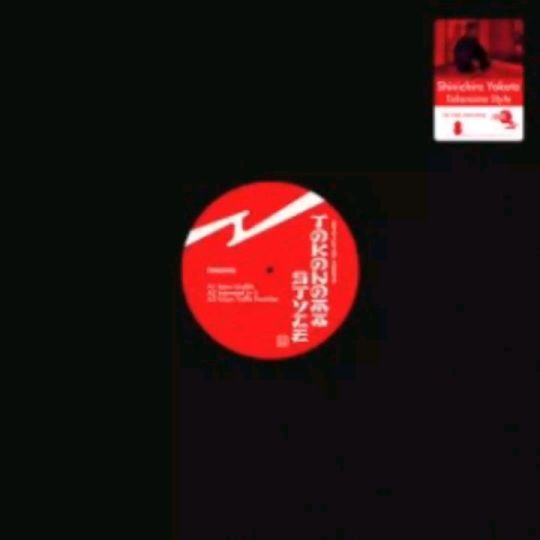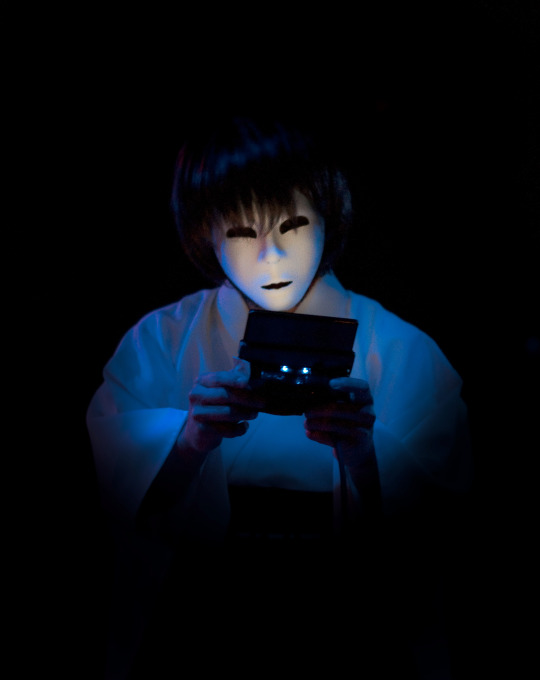#fareastrecording
Explore tagged Tumblr posts
Photo

SHINICHIRO YOKOTA / TOKONOMA STYLE : FAR EAST RECORDING (2LP) ジャパニーズ・ハウスの先駆的プロデューサーShinichiro Yokota がCDでリリースしたアルバム「Tokonoma Style」がようやくアナログで登場! AKAIのサンプラーS1100やKORG M1、PROPHET-5といった彼が90年代より愛用しているビン��ージ・マシンを駆使したカラフルな色彩の90sディープ・ハウスを展開! #ShinichiroYokota #FAREASTRECORDING #deephouse #house #90sdeephouse #japanesehouse #mininal #techhouse #2lp #strdmininal #strd2lp #vinyl#record#stradarecords#dj#vinyljunkies#kobe#motomachi#strada#recordshop#recordstore#神戸レコード#元町レコード#レコード店#レコード#アナログ https://www.stradarecords.com/shop/item/28184/index.php (at Strada Records) https://www.instagram.com/p/CpjaIk9vlyQ/?igshid=NGJjMDIxMWI=
#shinichiroyokota#fareastrecording#deephouse#house#90sdeephouse#japanesehouse#mininal#techhouse#2lp#strdmininal#strd2lp#vinyl#record#stradarecords#dj#vinyljunkies#kobe#motomachi#strada#recordshop#recordstore#神戸レコード#元町レコード#レコード店#レコード#アナログ
1 note
·
View note
Text
Article for Connect Magazine
I had a chance to write about a music artist I really love, and it will soon be published in Connect Magazine, which is a community driven project where expats living in Japan contribute articles about Japanese culture and everyday life. The issue my article will debut comes out in a few days. It is totally free to read and available online. Please enjoy below!
A Folkin’ Good Time: My Journey from Japanese Traditional Folk Music to 8-bit Technofolk
I stumbled upon Japanese traditional folk music the same way a horror film heroine might trip into a dark, deep pit in an old, creepy mansion: by accident.
And much like said heroine who suddenly wakes up in said mysterious, deep pit, I don’t even know how I got here. The last thing I remember is wondering about Japanese instruments and typing in “Japanese traditional songs” into a YouTube search bar, before being sucked in by the strums of shamisens and the dynamic vocals of Japan’s traditional folk singers.
Although it’s usually put under the umbrella term “min’yo”, there is no exact name for the genre Japanese traditional folk music belongs to. Sometimes they’re called inaka bushi (country melody), other times they’re called inaka buri (country tunes) or even hinata uta (rural songs). However, I think min’yo, whose kanji translates to roughly “the people’s chant”, is a weirdly accurate description of these simple, yet intriguing songs (and for simplicity’s sake, I’m going to be referring to them as min’yo from here on out).
In the same way certain foods or adorable mascots are part of certain prefectures’ identity, min’yo songs are another way for many regions in Japan to further distinguish themselves. Originally sung by lower class people, their purposes vary from work songs sung while toiling away in fields, to sacred religious chants performed during ceremonies. Many songs tend to have imagery of nature or details of everyday life, and often incorporate special dances or instruments during performances.
Take for example Japan’s oldest min’yo song: Kokiriko-bushi. Hailing from Gokayama village in Toyama prefecture, Kokiriko-bushi illustrates the natural flora and fauna of the village during the harvest season. A performance of Kokiriko-bushi is visually intriguing as well; performers move slowly across the stage in uniquely shaped straw hats, as others play the iconic binzasara instrument: an accordion-like apparatus consisting of many wooden slats that clack together to create the “dedereko-den” chorus of the song.

I fell in love with how all these elements came together into a cohesive experience. More compelling, though, were the powerful emotions behind each song. Each one seemed to condense the essence of feelings like sadness, happiness, or loneliness in a way that you could empathize with, despite the language barrier.
My appreciation for min’yo grew extensively throughout college, and during long hours of nighttime studying or downtime between projects and papers, I often listened to min’yo playlists to keep me company. Whether it was the more New Age, emotional ballads of Ikue Asazaki, or lo-fi recordings of televised performances from the 90s, I listened to it all. I wasn’t too picky, and even if I didn’t always understand the words, I let myself get swept away by the vibrant energy each song and performer exuded.
Unfortunately, my college roommate and study buddies didn’t quite share the same enthusiasm for min’yo, and I don’t blame them. I completely understand that min’yo isn’t exactly easy listening for a lot of people. It can be a bit grating at times, with tunes that don’t follow traditional Western note progressions, not to mention the sometimes startling kakegoe (call-and-response) that seemingly jump out of nowhere.
Older Japanese folks didn’t understand why I enjoyed the genre so much, either; even they found min’yo to be a relic of the past that didn’t quite have the chops to withstand the more international appeal of modern-day songs. For a lot of people, min’yo was something that only a few Japanese people sang, and even then only to demonstrate Japan’s nostalgic, rustic charm. I found myself having to agree with them. It seemed that min’yo was reserved for special occasions, like cultural events or TV specials, and so many recordings I enjoyed were decades old. Perfect preservation of the genre seemed to be the goal, and innovation was limited, if present at all.
And then I discovered Omodaka.
I was looking for more min’yo to listen to on the Internet (as per usual), and during a mindless return to YouTube’s homepage, I noticed a distinctive thumbnail.

A punchy, vibrant red background emblazoned with a stark white, minimalist graphic of an arrowhead flower; that’s all there was to it. The title was equally as simple: “Hietsuki Bushi”, uploaded by “Omodaka”. At the time, I had no idea what any of those words meant, but I was riding high on my min’yo video binge, so naturally I clicked.
Imagine my surprise when, instead of hearing the bare twangs of shamisen like I was expecting, I was hit with a lush, multi-layered 8-bit melody mingling with a classical guitar’s gentle strums. Before I could process what I was hearing, a loud, piercing, siren-like horn cut through, and jarring though it was, I only became even more entranced in whatever the hell YouTube just recommended me. I was totally immersed.
Then the vocals kicked in.
To hear the powerful voice of a trained traditional folk singer sing about a tragic love story from the Kamakura era was absolutely breathtaking, especially with the blips and thrums of the 8-bit chords accenting it every few measures. The singer’s notes swooped up and down with confidence, working alongside the digital landscape of the background music to convey the melancholic longing of the narrator. I’d never listened to such a wonderful marriage between traditional and modern musical aesthetics before, and as soon as the video finished, I was already eager for the next song.
As it turns out, the skilled vocals I’d heard on Hietsuki Bushi and on subsequent tracks belonged to classically trained folk singer, Akiko Kanazawa (whose min'yo rendition of the Beatles’ “Yellow Submarine” is definitely worth checking out), but listening to her other works, it was clear that someone else had a hand in the skillful mixing of chiptunes and traditional folk standards I was hearing. After a few music videos and a deep-dive Internet investigation, I soon discovered that Omodaka was not just a one-off, eclectic min’yo mashup duo, but a collaborative project that combines traditional Japanese music with contemporary visual artists. But, behind all of it is one man—electronic music producer and DJ, Soichi Terada.

An accomplished house techno artist and founder of record label Far East Recording, Terada has enjoyed listening to min’yo music since childhood, but felt he “couldn’t say that [he enjoyed min’yo]” to his friends because they weren’t interested in it. He experimented with min’yo/ house fusions, and over time, Terada developed a distinct sound that would define his label. Later on, spurred by a desire to collaborate with visual artist friends, Terada launched the Omodaka project in 2001.
The Omodaka project usually involves Terada’s friends creating fantastical, even psychedelic, animated music videos for his “techno folk” songs (a term Terada has coined to describe this niche genre). My personal favorites are “Yosowya-san”, with its side-scrolling 8-bit exploration of Japan’s gambling culture, and, of course, “Hietsuki Bushi”, an adventure of a love confession thwarted by portal jumping spacemen and a farmer/lion/bird chimera. Oh, and aliens. There are also several albums released under the Omodaka name too, each filled with songs beyond the wild, color bursting music videos.
Where the Omodaka project really shines, however, is during live performances. They are an unabashed bonanza of pure theatricality, with projections of Omodaka’s music videos flashing behind Terada as he waves around props like paper lanterns or bamboo flutes all throughout his set. Even Kanazawa makes an appearance during performances, singing to the audience virtually through the use of TV screens set up around the stage.

Especially striking is Terada’s costume when he performs as Omodaka. Instead of his trademark, brightly colored shirts, Terada comes onstage wearing a white, plastic mask, a shaggy black wig, and miko (Japanese shrine maiden) religious robes. As Omodaka, Terada transforms into an uncanny, barely human, androgynous entity whose only goal seems to be to get the audience’s blood pumping to some good ol’ technofolk.

Best of all, when you look into the audience during an Omodaka show, it doesn’t consist of solely geriatric Japanese; it’s diverse and, importantly, it’s young. I’m certainly no expert in methods of preserving a cultural property like min’yo, but I think that Terada is taking a step in the right direction to make sure min’yo will stick around for a bit longer. Sure, perhaps some purists may condemn Terada’s genre mixing as sacrilegious to everything traditional folk music stands for. However, when I see the audiences during Omodaka’s performances sway their bodies to Kanazawa’s trilling and yell back kakegoe to Terada, I feel that wonderful energy that drew me into min’yo in the first place. All I hope is that some of these people will also go back and listen to the music that led to the Omodaka project, and appreciate the unique sound of min’yo, too.
If you would like to check out the Omodaka project or Terada’s other works (he’s composed music for video games as well!), I highly recommend looking at his label’s YouTube channel: “fareastrecording” (all lower case, no space). If you search “Omodaka - Topic” in the search bar, YouTube even has a curated playlist with Omodaka’s entire oeuvre! Omodaka is also on Spotify. Furthermore, Terada regularly updates a Twitter account which announces future performances and other exciting news, like the October 28th release of Omodaka’s newest album in five years!
0 notes
Photo

Marcos Valle / Nova Bossa Nova (1997) ブラジルのグルーヴ・マスターが1997年に十数年ぶりに発表したアルバム。生ドラム、パーカッションと程よい打ち込みのリズムに乗ったエレピの音色が心地よい。アナログ盤はCDより2曲少ない8曲。日本の鎌倉にいったときの印象を曲にした「Mushi Mushi」(ムシムシ(蒸し蒸し)、クズキリなどの言葉が入っています)が削られているのは残念。 #MarcosValle#IvoStickcaldes#PatriciaAvi#Caneca#RocHunter Produced by Marcos Valle and #JoeDavis #vinyl#vinylcollection#coverart#albumart#33rpm#lp#nowspinning#nowplaying#アナログ盤#レコード#records #MPB#brasilianfusion#jazz#bossanoava#electoronicpop#latinjazz#FarEastRecordings#1997 #miyakojima #宮古島#coffee#コーヒー#紅茶 (Miyakojima-shi, Okinawa, Japan) https://www.instagram.com/toshinorinamiki/p/BwLB7PkApSh/?utm_source=ig_tumblr_share&igshid=r3r0iacctg7o
#marcosvalle#ivostickcaldes#patriciaavi#caneca#rochunter#joedavis#vinyl#vinylcollection#coverart#albumart#33rpm#lp#nowspinning#nowplaying#アナログ盤#レコード#records#mpb#brasilianfusion#jazz#bossanoava#electoronicpop#latinjazz#fareastrecordings#1997#miyakojima#宮古島#coffee#コーヒー#紅茶
0 notes
Photo

FAR EAST RECORDS Presents Bond Street at.虎子食堂🐯へ ゲストは京都のBLACK ARK店主 コジマさん 昨年京都でライブした際にお店に寄らせてもらった以来。 すてきなDJだった。 ブース前でレコード大好きマンたちが集ってあーだこーだ音楽談義しながら踊っていたり、かと思えばスピーカー前に立って寡黙に楽しんでる人もいたり ここは全国各地のレコード好きの話が入ってくるコアな社交場という感じ 個人的にはTOMMYくんのFAR EAST RECORDS レコードボクサーTシャツをゲットしたり コジマさんがかけてたカリプソの7"をその場で譲っていただいたり🙏(かけてた曲の話を色々聞いてたら売ってくれることに!)カヴァーしたくなりそうな良曲。 とまあなんか色々と、 いい空気をインプット🎈 今夜もたのしいパーティだった🙌 #BondStreet #fareastrecords #tommyfareast #blackark #ブラックアーク #Reggae #Ska #Rocksteady #虎子食堂 #キミーゴ #qimygo (虎子食堂) https://www.instagram.com/p/BrIhPEOD_5V/?utm_source=ig_tumblr_share&igshid=1rzndr1ctgqgf
0 notes
Video
vimeo
kyoteizinc (video mix) / omodaka from Omodaka (fareastrecording) on Vimeo.
kyoteizinc (video mix) / omodaka (far east recording) dir.: hiroshi kizu (P.I.C.S.) dancer: masako yasumoto
What is Omodaka? Omodaka is the name of the project developed through a trial and error process of mutational fusion of music and motion graphics. It will knock over your existing image toward a music video by a beautiful trajectory.
0 notes
Video
vimeo
kyoteizinc (video mix) / omodaka
1 note
·
View note
Video
youtube
Music Video Orchestra by Omodaka
also potatoes
4 notes
·
View notes
Video
youtube
My Friend Misa send me this link the other day:) amazing video clip!
A traditional Japanese song meets science fiction, future agriculture, teenage story, blip music and eccentric animation in a story of quantum physics across time.
0 notes
Video
youtube
I don't know when I'll get over this "electronic music-listening phase." If anything I don't really want to get rid of it.
7 notes
·
View notes
Video
youtube
plum song - omodaka
#plum song#Omodaka#kokiriko bushi#http://fareastrecording.com/#fareastrecording#japan#japanese#8bit#chiptune#gameboy#music video#neon#hands
3 notes
·
View notes